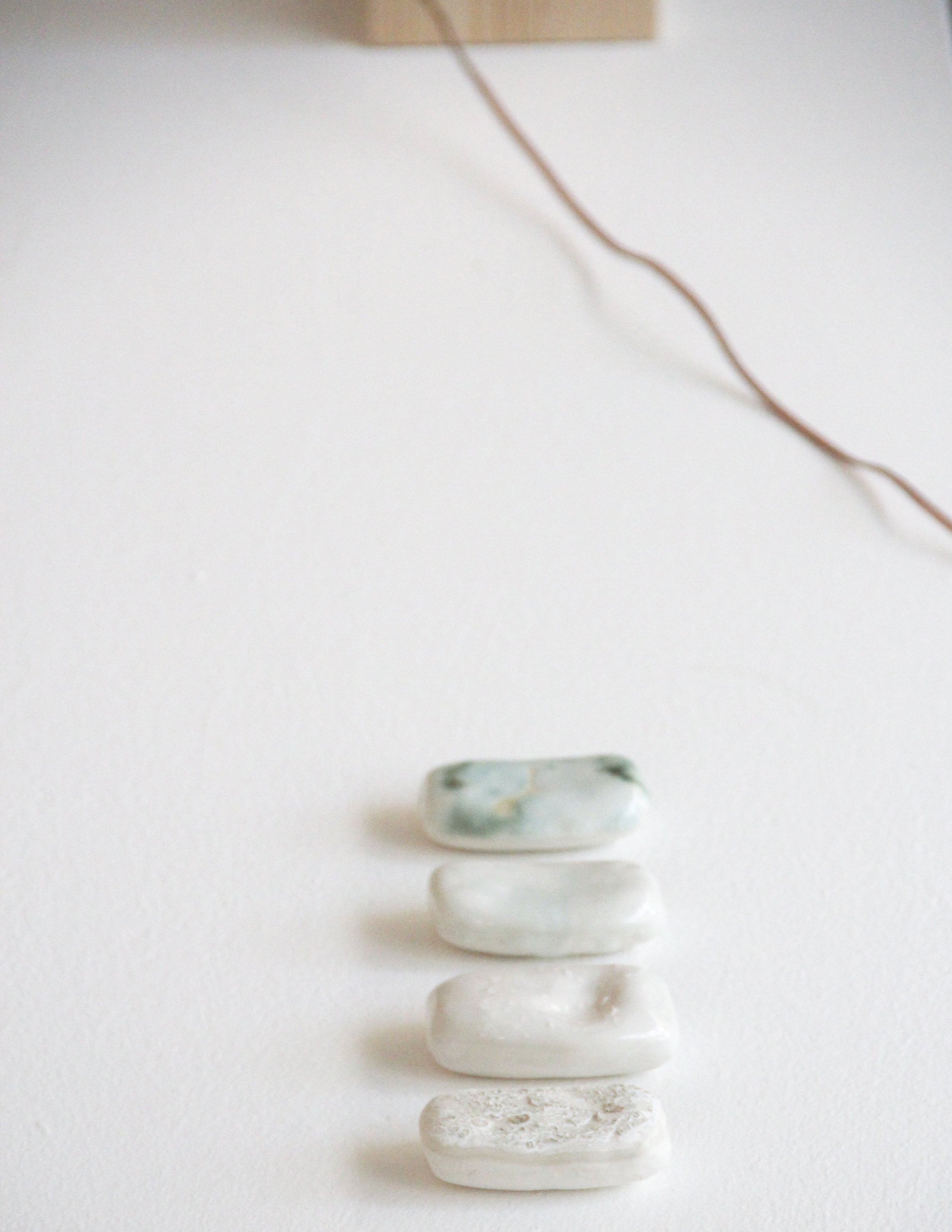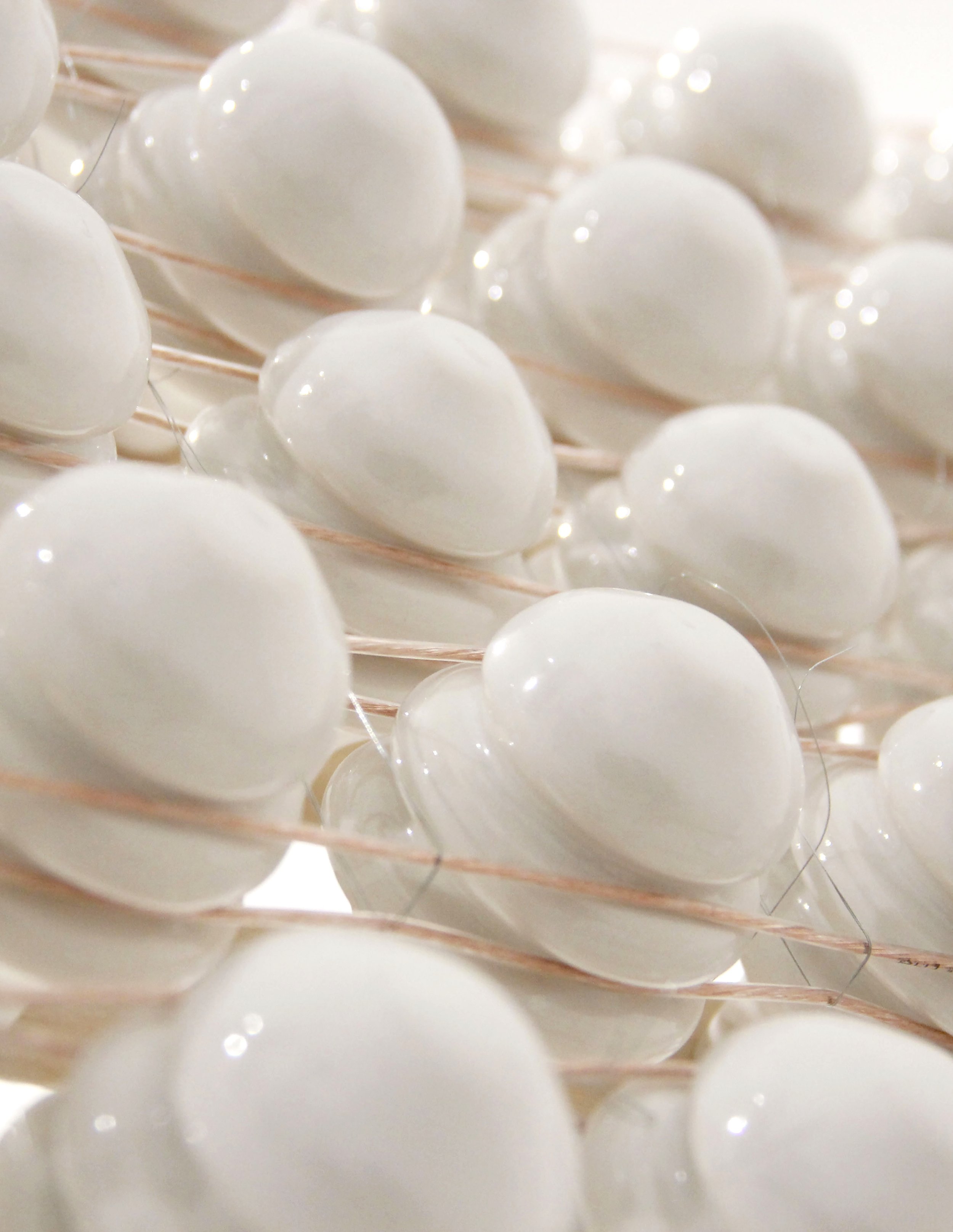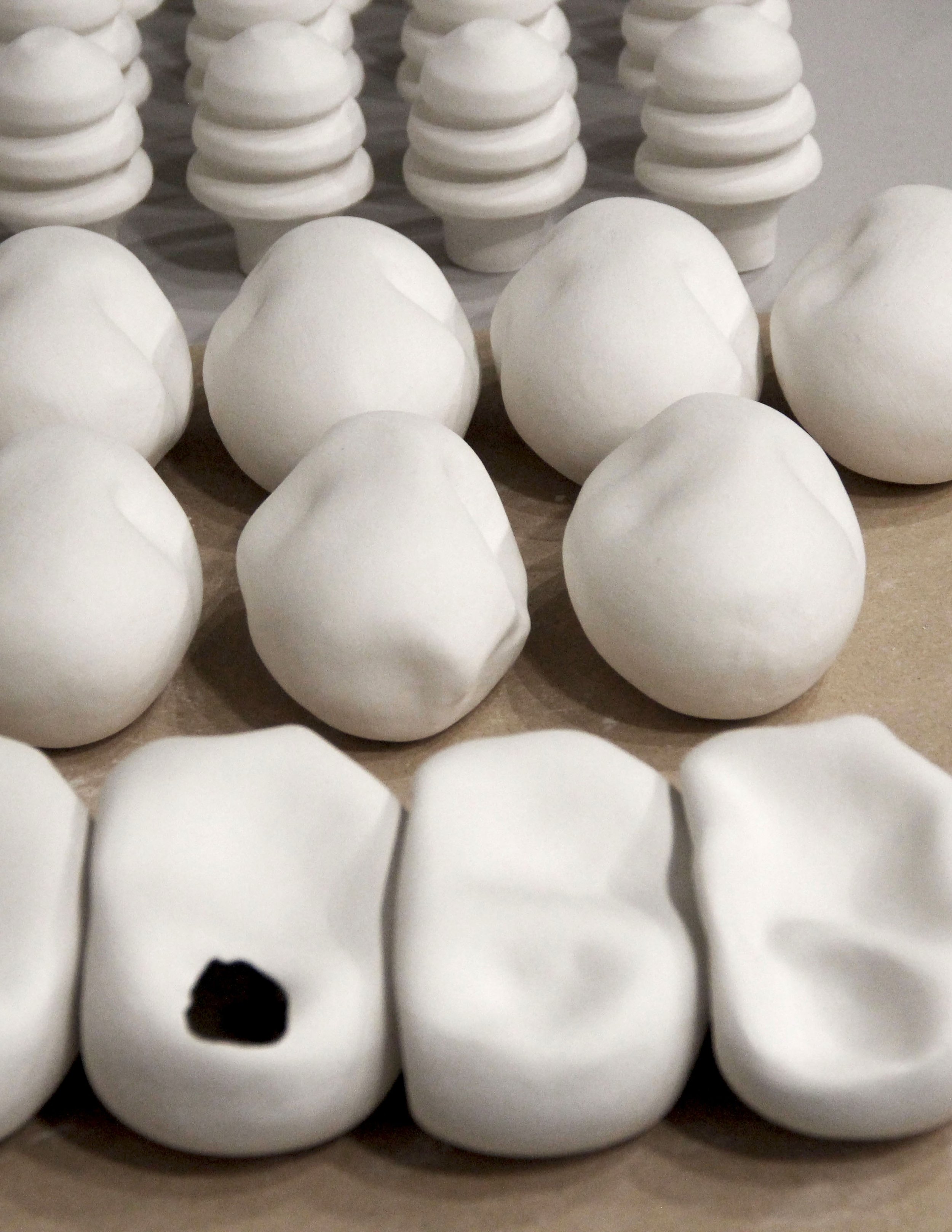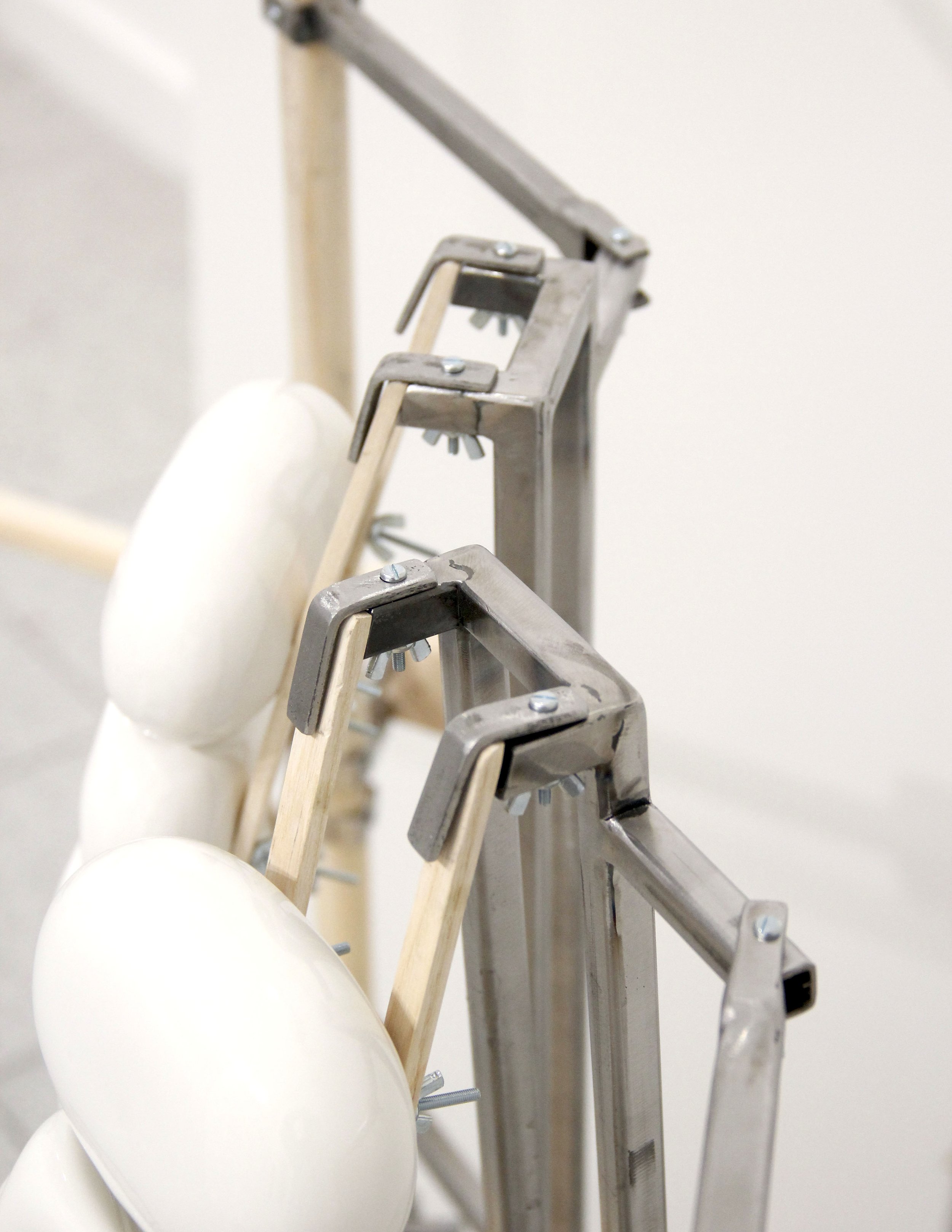
Sensuous Choreography
London, UK / 2024
Whereas our sense of sight is attracted to and amazed by new information, it appears that our sense of touch prefers known and trusted sensations. This insight is crucial when developing a concept that thinks through creating a positively interpreted situation of passive physical interaction with unknown objects.
In the attempt to initiate a process of familiar-making with an object that finally touches our skin, this exhibition arranges these objects from distant to close: Seeing the objects in their original context leads to an intellectual embedding. Actively touching them confirms or corrects what the eyes expected, such as the feel for surface, shape and weight. Passively received touch through the items, activated through the visitor's action, physically addresses our hairy skin. This skin is equipped with cells and afferents that transfer physical information to the brain, as well as those evaluating if the information is experienced as positive. If that is the case, experienced comfort is the consequence and "affective touch" is its name (Ackerley, 2022; Morrison et al., 2010). The arrangement is finalised by chance for verbal reflection and the cognitive manifestation of the experiences.
The Social Touch Hypothesis (Huisman, 2022) suggests that for touch to be truly affective, the sensation must be attributed to a social actor. Medical and technological research takes the point of 'social' very literally: Copy-paste human aesthetics. Arguable.
Porcelain, Metal, Wood
The objects in this exhibition act more subtly and embody different degrees of a touching human hand: immediate through fossilising the imprint of a hand (Jan Švankmajer, 2014), abstract through casts of a disappearing soap, and absent in the appearance of porcelain insulators— the most functional application of porcelain while having great tactile features. Hä, why porcelain? Good question! This material—uniting medical and emotional points of thematic access—stores and reacts to immediate physical touch in different ways. It embodies all the contrasts that make the issue of touch deprivation so challenging to combat. Cliffhanger. See the next project.
Ackerley, Rochelle (2022) C-tactile (CT) afferents: evidence of their function from microneurography studies in humans. Current Opinion in Behavioral Sciences, Volume 43. DOI: https://doi.org/10.1016/j.cobeha.2021.08.012
Huisman, Gijs (2022) An Interaction Theory Account of (Mediated) Social Touch. Frontiers in Psychology, 2022-05, Vol.13. DOI: https://doi.org/10.3389/fpsyg.2022.830193
Morrison, India; Löken, Line S.; Olausson, Håkan (2010) The Skin as a Social Organ. Experimental Brain Research 204 (2): 305–314. DOI: https://doi.org/10.1007/s00221-009-2007-y
Švankmajer, Jan (2014) Touching and Imagining: An Introduction to Tactile Art. London: I.B.Tauris

















